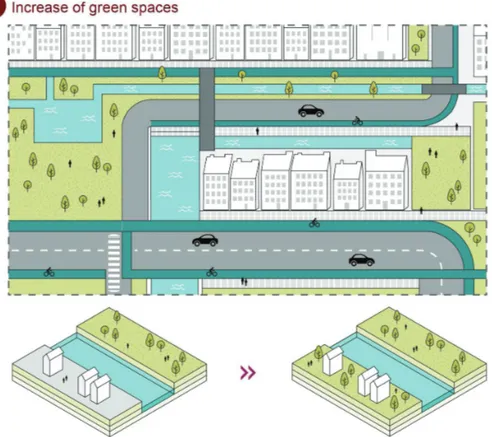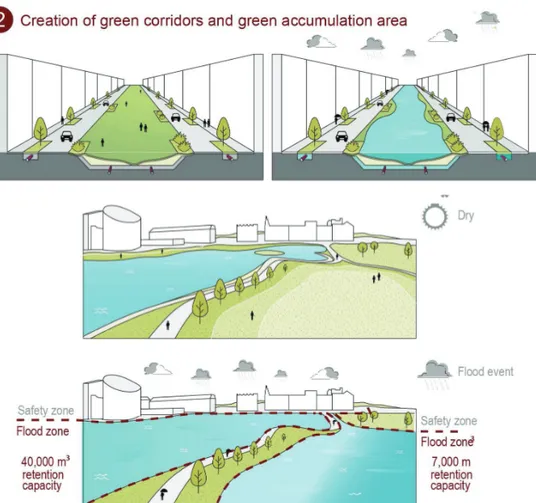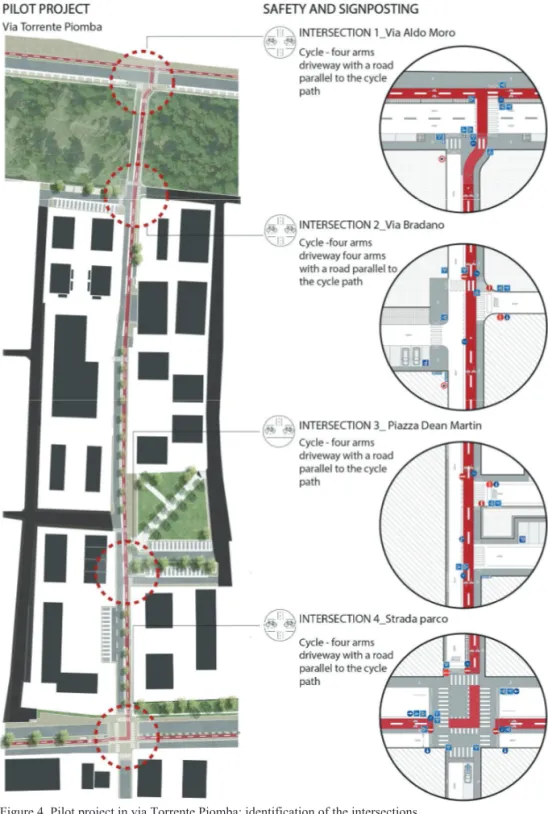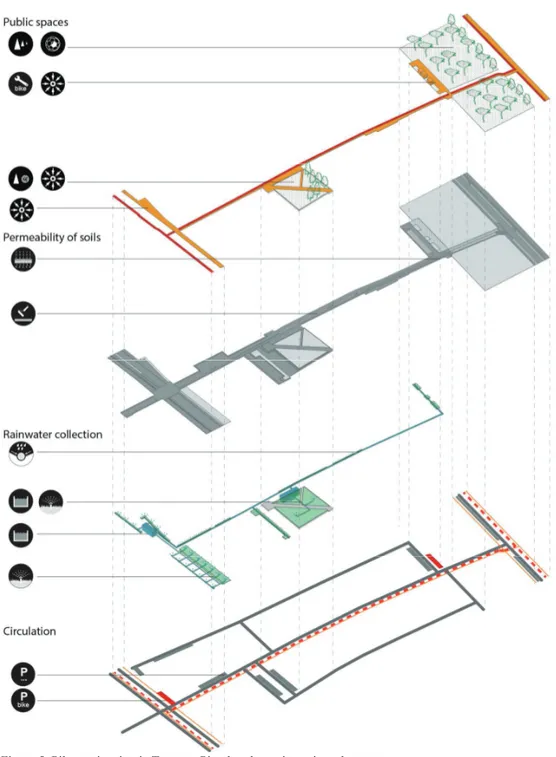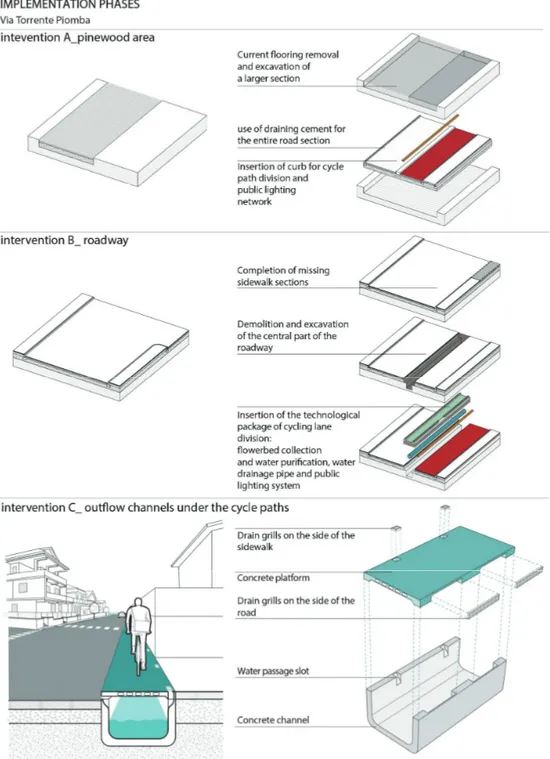HERITAGE 2018
10
thAnniversary Edition
Proceedings of the 6
thInternational Conference
on Heritage and Sustainable Development
Volume 1
Granada, Spain 12-15 June Edited by Rogério Amoêda Sérgio Lira Cristina Pinheiro Juan M. Santiago Zaragoza Julio Calvo Serrano Fabián García CarrilloHERITAGE 2018
Proceedings of the 6
thInternational Conference on Heritage and
Sustainable Development
Edited by
Rogério Amoêda, Sérgio Lira, Cristina Pinheiro,
Juan M. Santiago Zaragoza, Julio Calvo Serrano & Fabián García Carrillo Cover photo: Alhambra, Granada
© 2018 The Editors and the Authors
All rights reserved. No part of this book may be reproduced, stored in a retrieval system, or transmitted, in any form or by any means, without prior written permission from the Publisher.
e-ISBN 978-84-338-6261-7
Published by
Editorial Universidad de Granada Campus Universitario de Cartuja Colegio Máximo, s/n
Granada, Spain https://editorial.ugr.es
Green Lines Institute for Sustainable Development Av. Alcaides de Faria, 377 S.12
4750-106 Barcelos, Portugal [email protected] http://www.greenlines-institute.org 1st edition, June 2018
Legal Notice
Scientific Committee
Alessio Cardaci Elizabeth Aitken Rose
University of Bergamo, Italy University of Auckland, New Zealand
Alison McCleery Elizabeth Carnegie
Edinburgh Napier University, United Kingdom University of Sheffield, United Kingdom
Alistair McCleery Enrico Quagliarini
Edinburgh Napier University, United Kingdom Polytechnic University of Marche, Italy Ana Maria Cruz Valdivieso Esther Giani
University of Granada, Spain University of Venice, Italy
Ángela Barrios Padura Ewa Stachura
University of Seville, Spain University of Applied Sciences in Raciborz, Poland
Annette B. Fromm Fabián García Carillo
USA University of Granada, Spain
Antonella Versaci Francesca Geremia
University of Enna KORE, Italy Roma Tre University, Italy
Antonio Miguel Nogués-Pedregal Francisco Javier Lafuente Bolívar University Miguel Hernández, Spain University of Granada, Spain
Arwel Jones Francisco Reimão Queiroga
Arwel Jones Associates, United Kingdom University Fernando Pessoa, Portugal
Ataa Alsalloum Gemma Domènech Casadevall
University of Damascus, Syria Catalan Institute of Research on Cultural Heritage, Spain
Brian Osborne Humberto Varum
Queen’s University, Canada University of Porto, Portugal
Cláudia Ramos Hwee-San Tan
University Fernando Pessoa, Portugal University of London, United Kingdom
Cristina Pinheiro Isotta Cortesi
Green Lines Institute, Portugal University of Naples Federico II, Italy
Darko Babic John Carman
University of Zagreb, Croatia University of Birmingham, United Kingdom
David Hidalgo García John E. Tunbridge
University of Granada, Spain Carlton University, Canada
Debbie Whelan José Saporiti Machado
University of Lincoln, United Kingdom National Laboratory of Civil Engineering, Portugal
Eliseu Carbonell Josep Lluis I Ginovart
Catalan Institute for Cultural Heritage Research, Spain Universitat Rovira i Virgili, Spain Scientific Committee
Juan Garcia-Esparza Peter Davis
Universitat Jaume I, Spain Newcastle University, United Kingdom Juan Manuel Santiago Zaragoza Pilar Mercader Moyano University of Granada, Spain University of Seville, Spain
Julio Calvo Serrano Remah Gharib
University of Granada, Spain Hamad Bin Khalifa University, Qatar
Karla Nunes Pena Ricardo Mateus
Curtin University, Australia University of Minho, Portugal Lourdes Gutiérrez-Carrillo Rogério Amoêda University of Granada, Spain University Lusíada, Portugal
Maria Paz Sáez-Pérez Roy Jones
University of Granada, Spain Curtin University, Australia
Marko Koš ak Sabine Marschall
University of Maribor, Slovenia University of KwaZulu-Natal, South Africa
Mary Kenny Sally Helen Stone
Eastern Connecticut State University, USA Manchester School of Architecture, United Kingdom
Matthew Winsor Rofe Sérgio Lira
The University of South Australia, Australia CLEPUL-Porto / Green Lines Institute, Portugal
Michael Ripmeester Tony O'Rourke
Brock University, Canada London Institute of Banking & Finance and Coopera-tives, United Kingdom
Nunzia Borrelli Voltaire Garcês Cang
University of Milano-Bicocca, Italy RINRI Institute of Ethics, Japan
Pamela Sezgin Xosé A. Armesto-López
University of North Georgia, USA University of Barcelona, Spain
Paulo Lourenço Zeynep Aktüre
University of Minho, Portugal Izmir Institute of Technology, Turkey
HERITAGE 2018 R. Amoêda, S. Lira, C. Pinheiro, J. M. Santiago Zaragoza, J. Calvo Serrano & F. García Carrillo (eds.)
Chapter 3 - Heritage and environment
Revisiting the Alhambra architecture: Biophilic Design approach 373
A. al-Rhodesly, K. al-Hagla & T. Farghaly & M. el-Gamal
The perception of heritage values and their analysis by using GIS tools in vernacular heritage
lands-capes 387
P. Altaba Tena & J. A. García-Esparza
Historical heritage conservation versus energy efficiency. Traditional technological knowledge as de-sign answer?
397
S. Baiani & M. Pascucci
Wildfires in Portugal and the loss of rural heritage - Álvaro village case study 407
M. L. Belgas, J. Mascarenhas & F. G. Branco
Climate responsive strategies for industrial heritage: case study the “Reales Atarazanas de Sevilla” 419
M. V. Castilla, B. Sánchez-Montañés & L. González-Boado
Inclusivity in cultural heritage sites; Topkapi Palace 427
E. Çekmecelio lu & A. Sungur
Bicycle networks as a new ground project. The case study of Montesilvano 439
A. A. Clemente
Remembering San Juan: a post-disaster understanding of historic preservation 449
N. K. N. Correa
Social Pacts as a tool to protect the cultural landscape in the Amazon 459
C. M. Figueiredo & K. N. Penna
Muslim heritage and environment: the case of the watchtowers of the nasrid kingdom of Granada
(thirteenth to fifteenth century) 471
L. J. García-Pulido & J. Ruiz-Jaramillo
Enhancing the resilience of the urban system. A study for the city of Parma (I) 481
A. Gravante, P. Rota & M. Zazzi
A “smart” low-impact system for guaranteeing sustainable visitors’ access 493
B. Gregorini, G. Bernardini, A. Gianangeli, E. Quagliarini & M. D’Orazio
A framework of sustainable architecture in housing design for heritage and environment 505
Y. Kuan & V. Menno
Tocal Function Centre: new use for an old shed 519
E. Martin
Mountain heritage in danger. The shelters of Sierra Nevada, Granada, Spain 535
F. Martín de la Torre, J. M. Santiago Zaragoza & F. García-Carrillo
Building a new natural environment/building a new identity. The case study of the natural and rural landscape of the Banditaccia necropolis at Cerveteri, starting from the ICOMOS's evaluation 545
P. Porretta
HERITAGE 2018 R. Amoêda, S. Lira, C. Pinheiro, J. M. Santiago Zaragoza, J. Calvo Serrano & F. García Carrillo (eds.)
Chapter 3
1 INTRODUCTION
The Research Convention1 between the Department of Architecture of Pescara and the Municipality of Montesilvano has as its theme the relationship between Slow mobility and cycle / pedestrian networks. This field of investigation presupposes a definition of terms in order to better focus on the analytic field. In Europe, the reflection on Slow mobility is linked to the rationalization / reduction of traffic and is always closely connected to both the concept of sustainability (environmental, social and economic) and the ecological dimension. Multiple denominations: Soft mobility, Sustainable mobility, Zero-traffic mobility, Mobilitédouce,
Mobilité durable, Eco-movilidad. Although each of them tends to emphasize particular aspects,
there is a substantial convergence in making specific reference to the locomotion on foot, wheel or wheels, produced by human muscular force. In Italy, Slow Mobility themes and objectives clearly emerge from the extraordinary production of Guidelines2.And they show that the areas of study are substantially five: network identification, signposting, safety, materials and dimensional characteristics of the route. The aims of the guidelines are to spread the use of the
Bicycle networks as a new ground project. The case study of
Montesilvano
A. A. Clemente
Department of Architecture, D'Annunzio University of Chieti–Pescara, Pescara, Italy
ABSTRACT: The Research Convention between the Department of Architecture of Pescara and the Municipality of Montesilvano has as its purpose the identification of a Agenda of Guidelines for the Qualification of Bicycle Routes. The first results suggest to conceptualize some issues differently. First, you have to define the terms correctly. In Europe, reflection on slow mobility is linked to the rationalization / reduction of traffic and is always linked to both sustainability and ecology. Multiple denominations: Soft mobility, Sustainable mobility, zero traffic mobility, dual mobility, durable mobility, Eco-movilidad. Each of these aims to highlight specific aspects and this, of course, is not without consequences, neither theoretically nor from the point of view of operational practice. Montesilvano's urban fabric was heavily influenced by the relationship with the large territorial infrastructures (Railway, StradaStatale 16, Highway A14) and urban (AsseAttrezzato). And it is part of a more general story: the one regarding traffic engineering which, since the postwar period, conceived the idea that only for large network infrastructures should invest in solving mobility problems. It is not enough. You need to come back to think about smaller networks and, in particular, on bicycle routes. Montesilvano is compressed between the coastal line, the large infrastructures and the Saline River and, with a superficial look, appears only as a compact figure. That is not the case. Working on the hypothesis that cycling mobility networks are the potential matrices of a new land project that regenerates urban space, triggering processes of retraining of crossed contexts, forces us to think differently. To be more careful about the specifics.To assume the notion of public space as central. These are the perspectives that the research intends to pursue. And which, in all probability, should be further reflected in order to broaden the look on policies for a still too much sectorial bicycle mobility.
Chapter 3: Heritage and environment
bicycle as a means of transport for home-work/school trips; in clarifying the environmental, social and economic benefits related to the use of the bicycle compared to the traditional forms of motorized mobility; ensuring a high standard of safety while minimizing the risk of accidents or any other form of danger for the cyclist; in defining which is the most effective signposting; in identifying the geometric standards of the various types of route.
The field of interest of sector regulations in urban areas is similar. Already in 1995, with the Directives for the drafting, adoption and implementation of the Traffic Urban Plans, the main concern, regarding pedestrians and cyclists, was to "foresee all the useful and necessary interventions to guarantee their safety"3. Subsequently, in 1998 the Norme per il finanziamento
della mobilita ciclistica4 hope, on the one hand, the intermodality between bicycles and means of public transport and, on the other hand, identify the priority areas for the construction of cycle paths, in the area of sediment of disused railways and river banks. The following year, the Minister of Public Works in agreement with the Minister of Transport issue a regulation laying down rules for defining the technical characteristics of cycle paths5. In 2013 the strategic objectives for urban cyclomobility of the Regione Abruzzo6 are: the increase of the existing cycle network (privileging the networking), its safety, also through specific signaling and the connection with the system of collective mobility. Nor can the rules for drafting the Biciplan provided for by Law 2/2018 be ascribed to a very different register7.
2 FIRST INDICATIONS FOR THEGROUND PROJECT
In light of these brief considerations it is possible to state that Guidelines and Sector Regulations are placed within a hypothesis quantitative, whose almost exclusive priority is to realize as many kilometers of cycle paths as possible in which security, functionality of the track and intermodality are guaranteed. Numerous studies and research show that this is not sufficient8,not only because there is no directly proportional relationship between the kilometers of cycle paths and the number of cyclists who actually use them, but also (and above all) because; a series of project actions, planning acts and transport policies that must support and, in some cases precede, the realization of the tracked, are indispensable9.Of course, the importance of the Guidelines and the Regulations is not in question, because it is clear that they contain essential indications that, however, remain linked to an abstract cycle network, deprived of references to the specifics of the places, to the peculiarities of the territories and of the landscapes that crosses.
This work perspective brings out a plurality of issues that they require a different conceptualization. Three main ones.
First of all, the cycle network is not just a topic linked to mobility. But also accessibility: "mobility represents the capacity of an individual, or an object, to make movements in space while accessibility identifies the characteristic of who or what is accessible"10. The problem, therefore, does not consist solely in permitting quick and safe moves from one point of origin to one of destination but also to have the possibility to enjoy the spaces in condition of security and autonomy; to move in every direction, according to your own choices; to reach their destination, by the vehicle considered most suitable. It is a conceptual itinerary that involves the interdependence between the individual characteristics of the cycle path (and of the network) and the relationship with the contexts crossed. On the other hand, "to access a place or a service of the territory is notenough to move because, similarly to other abilities of relationships, accessibility calls into question all the elements involved in the relationship: the characteristics of the moving subject, the way it does and the ownership of the good or service of the territory that is reached»11. And this is precisely the passage that must be done in Montesilvano. A virtuos municipality that, after having realized the entire stretch of the Adriatic Cycle and a significant number of kilometers of other cycle paths, it is now called to take the next step: build the network. The passage from tracks to the cycle network is of extraordinary importance: only in this way the city can become a permeable body within which accessibility to schools, to the main facilities and places of urban excellence can be guaranteed. And more generally to all territory. Certainly it is a long-term scenario, considering that the urban fabric of Montesilvano has been strongly influenced by the relationship with the large territorial infrastructures (Railway, State Road 16, Highway A 14) and urban (AsseAttrezzato). And it's part of a more
HERITAGE 2018 R. Amoêda, S. Lira, C. Pinheiro, J. M. Santiago Zaragoza, J. Calvo Serrano & F. García Carrillo (eds.)
general story: that of traffic engineering that, from the second post-war has conveyed the idea that to solve the problems of mobility and accessibility one had to only invest in large networks infrastructure. Italian cities have shown that it is not enough. It is necessary to return to reflect on minor networks and, in particular, on the cycling ones. So far it has not been this way.
A second question is about a commonplace that concerns the whole Adriatic city. Montesilvano is compressed between the coast line, the large infrastructure and the Saline river and, at a superficial glance, it appears only like a compact figure. It is not so. Working on the hypothesis that the cycle network is a relational work attentive to the characteristics of the contexts crossed, forces us to think differently; to be more attentive to urban identities; to assume the notion of public space as central. And it is precisely in this way that the potentialities of some areas seem clear. Areas such as the market street of Corso Umberto I that reaches the beginning of via Vestina, the pedestrian cross that is created by the San park John Paul II to the sea, the area between the Town Hall and the Station railway, the area of the big hotels with the Palacongressi and the Multisala, the area of Stella Maris and Villa Delfico. It is the wait of a project that, also through the cycle network, is able to focus on the possibility of confering urban quality to open space.
Another relevant topic, which is often on the sidelines of the debate, regards the construction methods of the cycle paths. Sometimes, it seems that by just making as many kilometers as possible it is sure that a sustainable result has been achieved. Quantitative optics is only the first step. Which, however, is not enough. We must also focus on the sustainability of materials and the functions that a track can play, in addition to the one supporting cycling mobility. Among the many, an example that in Montesilvano could be of great importance. Mostly in relation to the frequent allegations of the last years.
Figure 1. COPENHAGEN: The Copenhagenize Current - Stormwater Management and Cycle Tracks is the strategy used for the rainwater collection. This strategy is composed of three principal actions. Here the first one: Increase of green spaces.
Chapter 3: Heritage and environment
Near green spaces only permeable materials should be used in order to obtain two positive results: allow a rapid outflow of water and not contributing to the waterproofing of the soil. Good practices are not lacking. Approved in 2012, the Climate Adaptation Plan aims to make Copenhagen the first carbon neutral capital by 2025. Within the plan are provided a variety of actions, including integrated measures on mobility and on the collection of first rainwater on public and private land. One of the strategies is called The Copenhagenize Current - Stormwater
Management and Cycle Tracks12 which consists in creating, below a part of the cycle network, water drain tanks of meteoric waters in order to collect them from the most exposed areas to floods and convey them to the river. These are concrete channels prefabricated with a cover composed of lightweight modular panels in order to allow both a fast installation and a quick maintenance. Along with these measures, there are also grids of drainage both from the side of the sidewalk and from that of the road to allow the drainage of the water, blocking, at the same time, the passage of debris. Another planned action by the plan defines a new way to integrate urban water in relation to hydraulic aspects, biological and social. The idea is to create green areas for water storage holding rain water in order to channel it outwardsof the city or to use it, thanks to underground reservoirs for irrigation.
Figure 2. COPENHAGEN: The Copenhagenize Current - Stormwater Management and Cycle Tracks. Here the second strategy: creation of green corridors and green accumulation area.
HERITAGE 2018 R. Amoêda, S. Lira, C. Pinheiro, J. M. Santiago Zaragoza, J. Calvo Serrano & F. García Carrillo (eds.)
Figure 3. COPENHAGEN: The Copenhagenize Current - Stormwater Management and Cycle Tracks. Here the third strategy: Construction of drainage channels under the cycle paths.
3 CONCLUSIONS
To understand the potential of Slow Mobility it is necessary to change the point of view. More specifically, it is important to underline how the cycle network it is not a small highway that, by its nature, «proposes an effect of "extraterritoriality"» in which «the monofunctionality (linking a place to the other), the specialization (space reserved for the movement of vehicles) and speed exclude functional relations with the surrounding territory)»13. Slow mobility feeds on the contexts it traverses: it is not a policy of sector. The cycle network is a relational work that differs from any bypass which, always remaining alongside something, does not manage to activate any link with it; or a gallery that, passing below, does not create any relationship with the territory; or, again, a viaduct that, crossing the landscape at altitude, does not open up any possibility of dialogue. In other words, technical functionality, safety of the route and intermodality between different systems of transport (cycle-pedestrian, public and private driveway, railway), must have the same importance of the relationship that the cycle network can establish with the contexts crossed. And this is precisely the reason why it is necessary that the cycle network becomes the presupposition of a soil project that knows how to take responsibility for glimpsing some possible answers to great topics such as, for example, better management of the first rain waters. Addressing a topic of this magnitude does not mean to simply evoke it but to imagine architectural devices that are able to become, in the first instance, project hypothesis and, subsequently, realizations. This is the responsibility that the research must take. Hence the decision to provide the municipal administration evaluation tools and planning guidelines both to guarantee adequate performance levels of cycling networks, and to guide the morphological quality of interventions, taking into account the multiple relationaland topological values expressed by the territory.
Chapter 3: Heritage and environment
Figure 4. Pilot project in via Torrente Piomba: identification of the intersections.
HERITAGE 2018 R. Amoêda, S. Lira, C. Pinheiro, J. M. Santiago Zaragoza, J. Calvo Serrano & F. García Carrillo (eds.)
Figure 5. Pilot project in via Torrente Piomba: the main project elements.
Chapter 3: Heritage and environment
Figure 6. Project in via Torrente Piomba: categories of intervention of the new cycling network.
HERITAGE 2018 R. Amoêda, S. Lira, C. Pinheiro, J. M. Santiago Zaragoza, J. Calvo Serrano & F. García Carrillo (eds.)
Figure 7. Project in via Torrente Piomba: technological innovations and dimensional morphological features of the new cycling network.
Chapter 3: Heritage and environment
ENDNOTES
1 The inter-institutional collaboration between the Department of Architecture of Pescara and the Municipality of Montesilvano, in line with the Protocol of Understanding, provides a two-year duration (2017/2018). Research group: Scientific responsible - Prof. Paolo Fusero; Scientific coordination - Prof. Antonio Alberto Clemente; Fellows - Arch.ttiGiulioGirasante, Paolo Chiavaroli. Collaborators: Arch. ParideTaurino, Eng. Francesco Rossi, Eng. Cristina Affatato, Giuseppe Leone, PierluigiPetaccia, Giuseppe D'Abbraccio.
2 It is impossible to give an exhaustive account of the Guidelines in this area. It is however considered useful to mention some of the most relevant: AA.VV., The city by bicycle. Designing cycle paths to
improve the environment, ARPAV and FIAB, 2007 http://www.arpa.veneto.it/; Carlo Socco, Chiara
Montaldo (edited by), Guidelines ZONE 30. The network of cycle paths, publication of the Sustainable Cities Observatory of the Politecnico di Torino, 2007 http://www.regione.piemonte.it/; AA.VV.,
Guidelines PRESTO Promote the bicycle as a means of daily transport for everyone, publication of the
European Community in the framework of the Intelligent Energy - Europe Program, 2010 http://www.rupprecht-consult.eu/; AA.VV., Guidelines. Developing and Implementing a Sustainable
Urban Mobility Plan, Co-funded by the Intelligent Energy Europe. Program of the European Union,
2014 www.eltis.org/; EdoardoGalatola, Road safety and mobility of non-motorized users, published by FIAB, 2016 www.fiab.info/download/.
3 The Directives are issued by Min. LL.PP. (G.U. No. 146 - 24 June 1995), according to the Art.36 of the legislative decree of April 30th 1992, n. 285. New highway code.
4 Law n.366 of October 19th 1998.
5 Ministerial Decree n.557 of November 30th 1999.
6 Abruzzo Region Law n.8 of March 25th 2013. Interventions to promote the development of cycling mobility.
7 Law n.2 ofJanuary 11th 2018. Provisions for the development of cycling mobility and the creation of the national cycling route network.
8 M. Tira, M. Zazzi, Pianificare le reti ciclabili territoriali, Gangemi, Roma 2007, Antonio Dalla Venezia, Silvia Zamboni, Muoversi in bicicletta, in Anna Donati, Francesco Petracchini, Muoversi in
città. Esperienze e idee per la mobilità nuova in Italia, Edizioni Ambiente, Milano 2015.
9 Ministry of Transport, Public Works and Water Management, Directorate-General for PassengerTransport, The DutchBicycle Master Plan, Description and evaluation in an
historicalcontext, Amsterdam 1999. http://www.fietsberaad.nl/.
AA.VV., Cycling in the Netherlands, Ministry of Transport, Public Works and Water Management Directorate-General for Passenger Transport, Amsterdam 2009. http://www.fietsberaad.nl/.
AA.VV., The bicyclecapitals of the world: Amsterdam and Copenhagen, Fietsberaad, Utrecht, 2010. http://www.fietsberaad.nl/. AA.VV, 2014 Netherlands Cycling Study Tour. Observations and
Reflections Report, https://www.transport.wa.gov.au/.
10 Marco Castrignanò, Matteo Colleoni, Cristina Pronello (edited by), Muoversi in città. Accessibilità e
mobilità nella metropoli contemporanea, Franco Angeli, Milano 2012.
11ibidem
12 http://www.copenhagenize.com/2015/03/the-copenhagenize-current-stormwater.html. 13Nico Ventura, Lo spazio del moto Disegno e progetto, Laterza, Bari-Roma 1996.
HERITAGE 2018 R. Amoêda, S. Lira, C. Pinheiro, J. M. Santiago Zaragoza, J. Calvo Serrano & F. García Carrillo (eds.)
